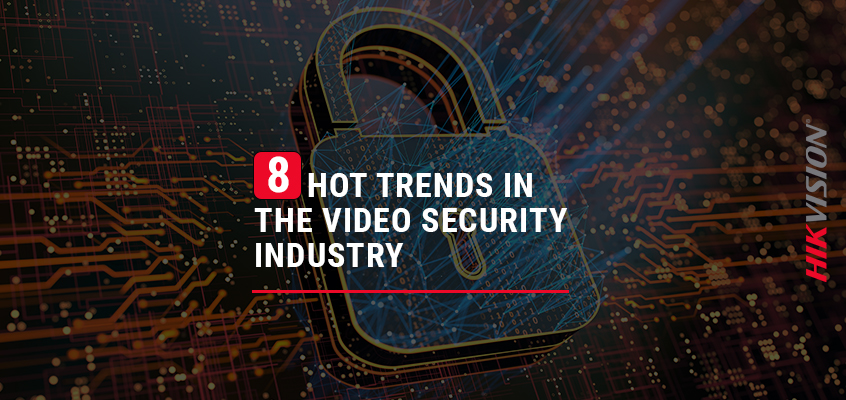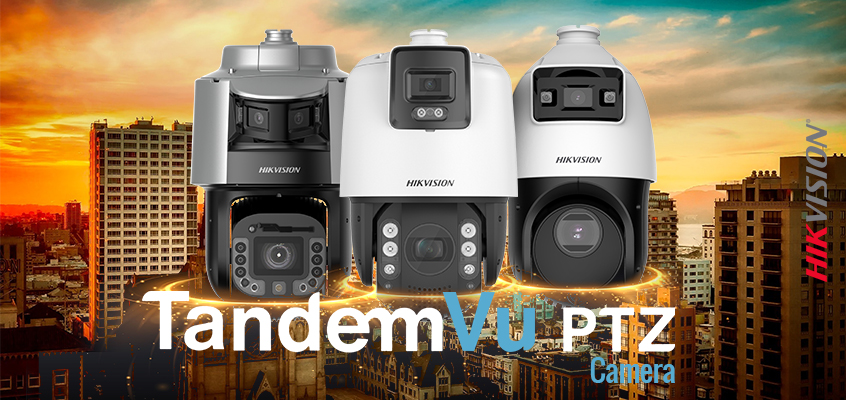8 Hot Trends in the Video Security Industry and 8 Ways Hikvision Technology Supports Them

2023 is here and we’re seeing several key influences affecting trends in the video security market. From Artificial Intelligence (AI) algorithms driving better solutions all the way to the cybersecurity, here are eight hot trends in the security industry, plus eight corresponding Hikvision solutions that leverage the technology to help you upgrade your security systems.
1. MACHINE LEARNING: Intelligent surveillance systems powered by Deep Learning, AI, and machine learning are growing in popularity, as they offer enriched solutions that enhance existing system functionality. These types of intelligent systems perform a wide range of functions, from reducing video search time by enabling search by defining characteristics such as eyeglasses or carrying a shopping bag, all the way to automating occupant density for an office or retail space.
Hikvision Solution: A variety of intelligent cameras that deliver advanced analytics to support business intelligence. From our second generation (G2) AcuSense technology for accurate human and vehicle detection all the way to G2 DeepinView camera lines that are equipped to detect multiple attributes such as clothing color and accessories with exceptional accuracy, we have AI solutions for your application.
2. CONVERGED SYSTEMS: Combining symbiotic systems with central management from a Video Management System (VMS) enhances efficiency and decision-making. This could mean combining, where possible, video security, intercom, access control, alarms and fire prevention, as examples.
Hikvision Solution: HeatPro thermal cameras offer advanced fire detection for better asset and property protection. Users can set the alarm and pre-alarm temperatures so they will receive instant alarm notifications when the temperature goes beyond a preset threshold. Our intercom systems can also be integrated with video security systems for a comprehensive door-to-door solution.
3. POWERFUL PROCESSING ON THE EDGE: A recent SDM Magazine article talked about “Processing at the edge will become more of the norm as the edge itself continues to get more powerful.” Analytic plug-in integration and the speed of firmware updates will fuel deployment of edge analytics.
Hikvision Solution: One example of our analytics on the edge (camera) is the TandemVu cameras which feature a bullet and PTZ camera in one unit for multi-directional video security. The overall view remains even during the pan, tilt, and zoom maneuvers so users can see the big picture and details from one camera. TandemVu series also include ColorVu technology for 247 full color images.

4. CRYSTAL CLEAR IMAGES 24/7: Security cameras featuring low light imaging technology to render high definition and full-color images around the clock in dark environments have seen great responses in the marketplace. These systems enable enhanced visuals for identification of suspects and events with greater clarity in video and images.
Hikvision Solution: We offer a complete portfolio of cameras with our ColorVu second generation technology for full color video and images, day and night. This next level integration is known as “ColorVu + X.” With ColorVu + X, users can make smarter decisions, react faster to security events, reduce false alarms, and uplevel security capabilities. Watch this video to see the ColorVu difference.
5. BIOMETRIC ACCESS CONTROL: The access control market is rapidly expanding beyond traditional keycards, enabling biometric authentications with everything from fingerprints to touchless face authentication. Touch-free solutions proliferated after Covid spread as a technology to enhance access control security while reducing the spread of germs.
Hikvision Solution: Our Touchless Identity Authentication Terminal offers touch-free entry with a host of other intelligent features, such as automated mask detection, automated alerts, and skin-surface temperature reading. Read the success story that covers the Hikvision MinMoe Biometrics Reader used in a converged security system for a Florida condo.
6. CARBON-NEUTRAL SECURITY SYSTEMS: Protecting the environment and reducing power consumption is an important value spanning the globe. Policies that restrict carbon emission standards are pushing industries such as manufacturing toward adoption of environmentally-conscious practices in their daily operations and production. New security systems have emerged to deliver advanced technology while supporting this.
Hikvision Solution: Hikvision’s Solar-Powered Security Kits come fully equipped with a solar panel, a built-in battery, and a heater to provide security using the sun with low power consumption to reduce your footprint. This is a great solution for remote security.
7. CYBERSECURITY IN PHYSICAL SECURITY: Cybersecurity for surveillance systems is something Hikvision has been committed to for some time, leading conversations in the industry around minimizing risks, educating integrators on key approaches such as Zero Trust, and quick responses to vulnerabilities. Video security systems cyber-secure can emerge stronger when everyone—integrators, end users, and manufacturers—take responsibility for ensuring device security.
Hikvision Solution: Beyond cybersecurity white papers that expand access to knowledge for everyone, we have an updated, public online Cybersecurity Center with several practical cybersecurity resources for security dealers and the industry at large.
8. FILTERED DATA FOR BETTER ALARM RESPONSE: False alarms are a common industry problem since traditional motion detection is triggered by pixel changes in the video, meaning innocuous events such as wind or animal movement results in alarms, costing end users time and money responding to unimportant events. New algorithms enhance systems with greater intelligence to reduce false alarms and improve detection for better alarm notifications and response capabilities.
Hikvision Solution: Hikvision’s second generation Value IP Cameras feature Motion Detection 2.0 for enhanced human and vehicle detection in real-time. Watch the video to see it in action.
For more information about our solutions, contact your local Hikvision representative.

